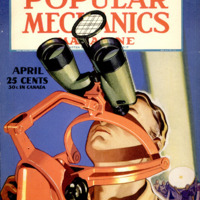One Pilot Can Fly Two Planes by Transmitting to Robot
Item
- Title (Dublin Core)
- One Pilot Can Fly Two Planes by Transmitting to Robot
- Article Title and/or Image Caption (Dublin Core)
- One Pilot Can Fly Two Planes by Transmitting to Robot
- Language (Dublin Core)
- eng
- Temporal Coverage (Dublin Core)
- World War II
- Date Issued (Dublin Core)
- 1941-04
- Is Part Of (Dublin Core)
-
 Popular Mechanics, vol. 75, n. 4, 1941
Popular Mechanics, vol. 75, n. 4, 1941
- pages (Bibliographic Ontology)
- 486
- Rights (Dublin Core)
- Public domain
- Source (Dublin Core)
- Google books
- Archived by (Dublin Core)
- Enrico Saonara
- Marco Bortolami (editor)
- Spatial Coverage (Dublin Core)
- United States of America

